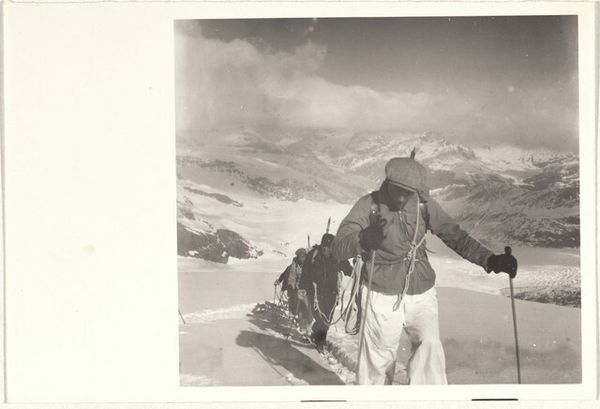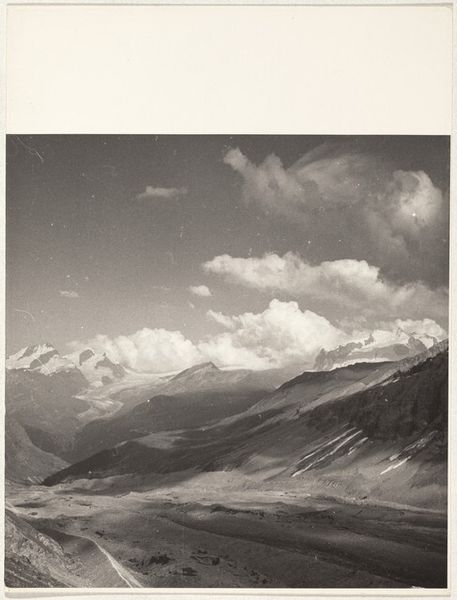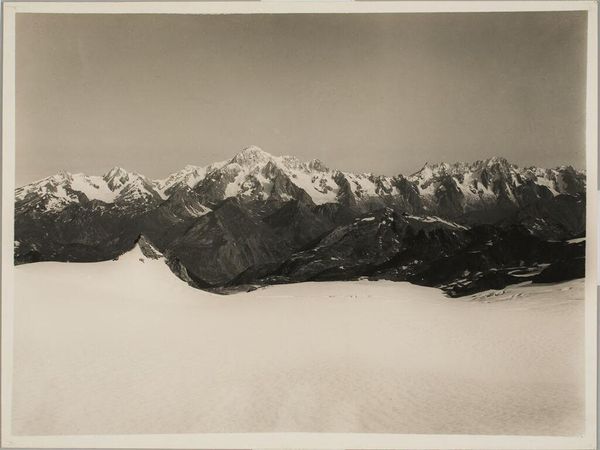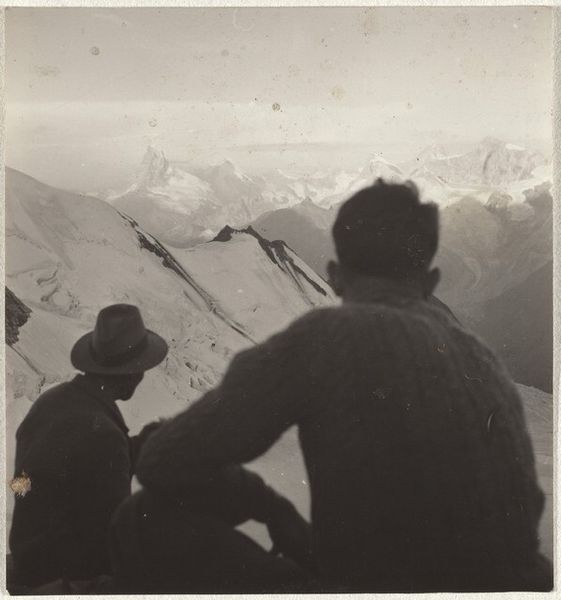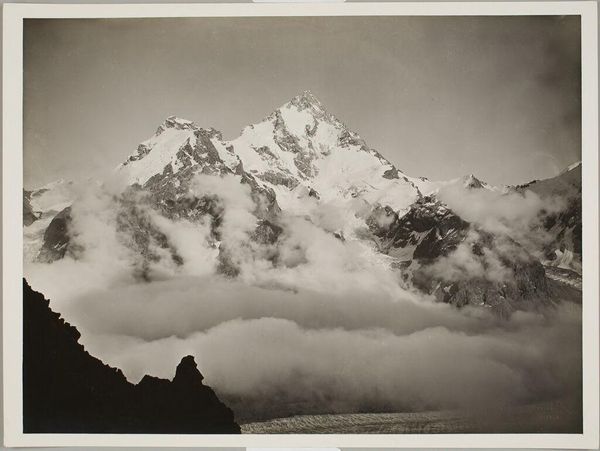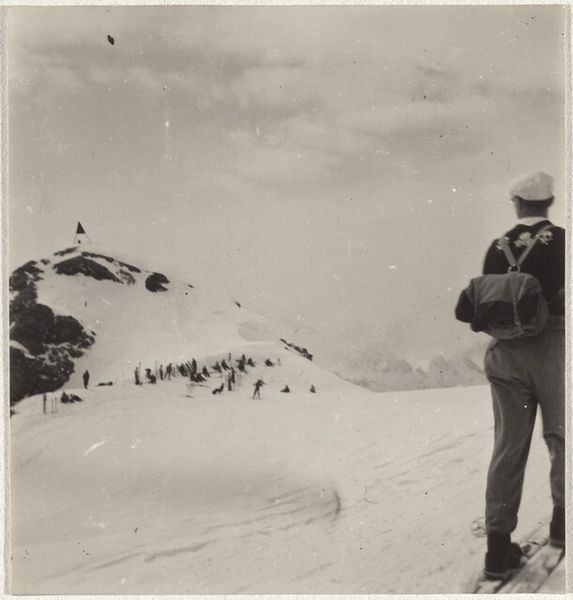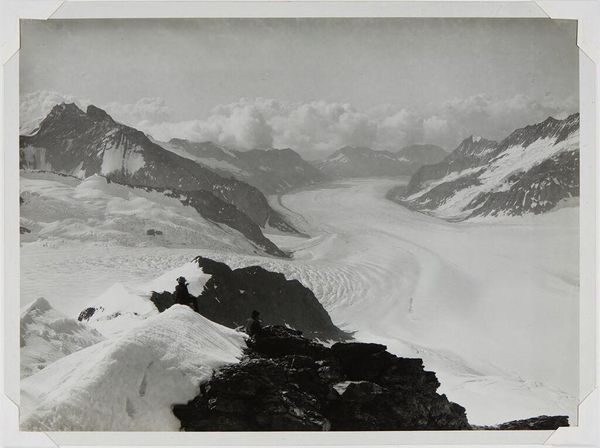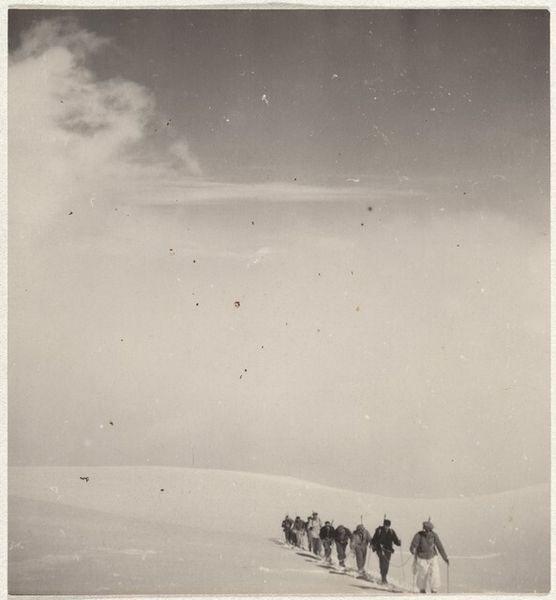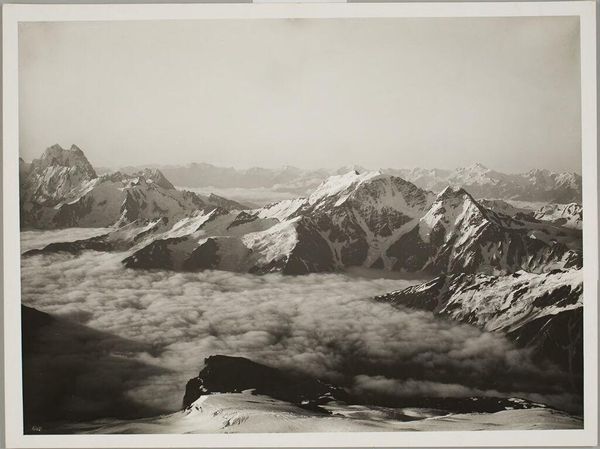
Dimensions: sheet: 20.2 x 25.4 cm (7 15/16 x 10 in.)
Copyright: National Gallery of Art: CC0 1.0
Curator: Here we have Robert Frank's "Peru," a gelatin-silver print from 1948. It depicts a group of people in the foreground, wearing hats, with a majestic mountain range filling the background. Editor: It has a haunting quality. The light, almost sepia-toned, makes me think of faded memories, and there's an element of harshness, of struggle maybe. The hats cast deep shadows on the faces. Curator: Frank’s work often explored the margins of society. Considering this piece within that context, one might view it as commenting on labor, and particularly the conditions experienced by those living within that geographical location during this era. These garments serve practically, as everyday uniforms to be worn. Editor: It's intriguing how he positions the figures, too. The people are almost pushed to the edges, framed by the overwhelming landscape. I can imagine these people surviving harsh climates and the mountains behind them symbolizing permanence. Curator: His choice of gelatin-silver as a material speaks volumes. Its affordability and reproducibility allowed Frank to disseminate these images widely. This was important for communicating something that challenged the status quo in the art world. This piece wasn't produced to just be bought and sold, the intent here was on social dialogue. Editor: Do you think the museum space enhances or detracts from the rawness of the photo? Curator: That's a crucial point. Galleries inevitably frame the artwork within institutional narratives of "importance", somewhat diluting the photograph's street origins. These pictures gain in symbolic value by their presentation in places such as these, but simultaneously begin to function differently from Frank's initial conception. Editor: I'm struck again by that strong horizontal division in the composition – the dark figures juxtaposed with those towering peaks. It’s the type of picture that makes you question power, really, doesn’t it? Who controls access to the land, its resources, the means of representation? Curator: I agree; it underscores the complexities of image-making itself. I am so interested to see how modern eyes might respond. Editor: Ultimately it’s a potent, evocative piece. Thanks for shedding so much light on its social fabric, the way it functions and invites us to look at familiar structures and objects from unusual perspectives.
Comments
No comments
Be the first to comment and join the conversation on the ultimate creative platform.



